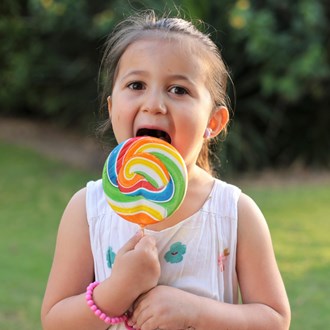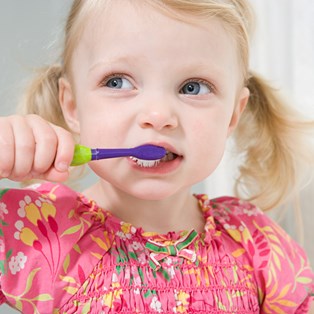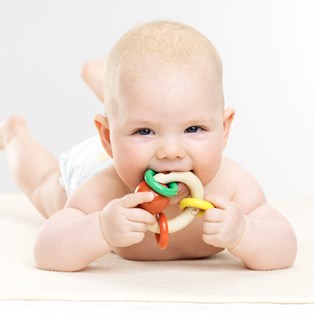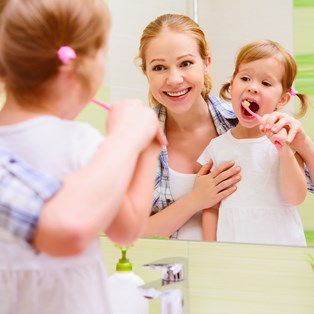Teething symptoms: signs of teething in babies

The low-down on your baby's first teeth
By Practical Parenting Team
April 02 2019
When do babies start teething?
Your baby’s first tooth will appear some time between four and 10 months. All babies are different but the average baby teething age is from about six months and all 20 baby teeth will have come in by the time they are two or three years old.
Teething symptoms
Babies often have pain and discomfort when their teeth are coming through. As well as crying a lot, the common signs of teething are:
• Flushed, red cheeks
• Excessive drooling
• Not feeding as well as usual
• Irritability or restlessness
• Pulling on the ear of the side where the tooth is erupting
• Sucking on fingers, fists and toys
• More dirty nappies than usual (teething poo can also contain some mucus)
• A slight rise in temperature, but teething doesn’t usually cause a fever (a temperature of 38 degrees Celsius or more)
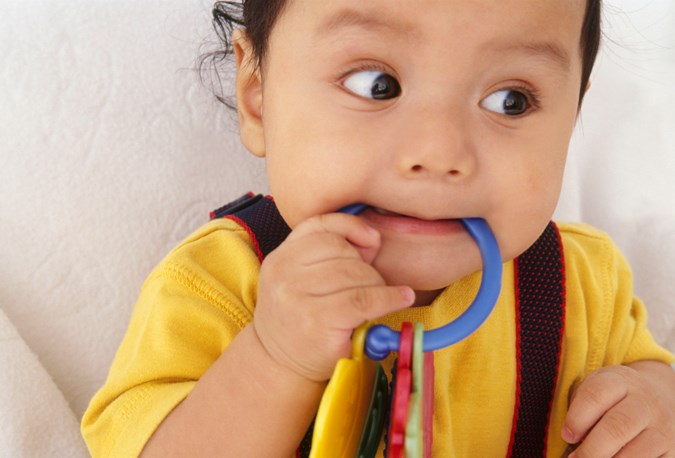
Getty Images
What do teething gums look like?
A teething baby’s gums can appear red or swollen as the teeth are pushing through. They may also be very sensitive, which is why babies may turn away from a breast or bottle while teething.
How to help a teething baby
Try easing your baby’s pain and discomfort with these tips. For milder teething issues you can try giving your baby chilled (not frozen) teething rings, a dummy (if they use one), a clean, wet washcloth or a spoon to chew on. For older babies you can also try giving them firmer foods, such as sugar-free rusks, to suck. You can also try rubbing a clean finger over the sore gums.
To ease more severe teething pain, you can give your baby infant paracetamol (if they’re one month or older) or ibuprofen (if they’re three months or older). Check the dosage information on the bottle.
If the pain seems to be severe and your baby seems really unwell or has a fever, take them to the doctor as it might be something more serious. Ear infections can sometimes be mistaken for teething.
If your baby develops a teething rash on their chin from all the drool, wipe their chin often with a soft, cotton cloth but try not to rub it. You can try applying a barrier cream, such as petroleum jelly, to their chin to protect their skin. Cloth bibs will prevent their clothes and chest from getting soaked.
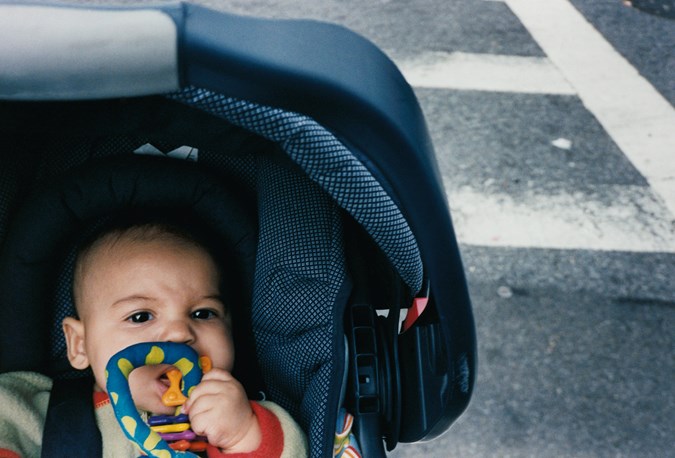
GETTY IMAGES
Other remedies
Baby teething gels usually contain an anaesthetic and an antiseptic and have a numbing effect when they’re rubbed, with a clean finger, onto the sore gums. But they wear off and are washed away by the baby’s saliva. Many health professionals don’t recommend them since they can be harmful if the baby swallows too much of it. If you do want to try one, make sure it’s sugar free and specifically formulated for babies. Follow the pack instructions closely.
Many parents swear by homeopathic teething remedies but there is no evidence they work and according to Health Direct they have been linked to some baby deaths.
Some parents also use amber necklaces or bracelets but there is a risk of strangling or choking so most experts don’t recommend them. If you do use them, try to stop your baby sucking on them and remove them when they’re sleeping.

GETTY IMAGES
Care for teeth and gums
You can use a clean, damp cloth to wipe your baby’s gums before any teeth appear and a small, soft toothbrush for the first few teeth. Don’t introduce toothpaste until your child is 18 months old.
If you’re wondering when to expect each tooth, visit Healthy WA for a baby teething chart.


